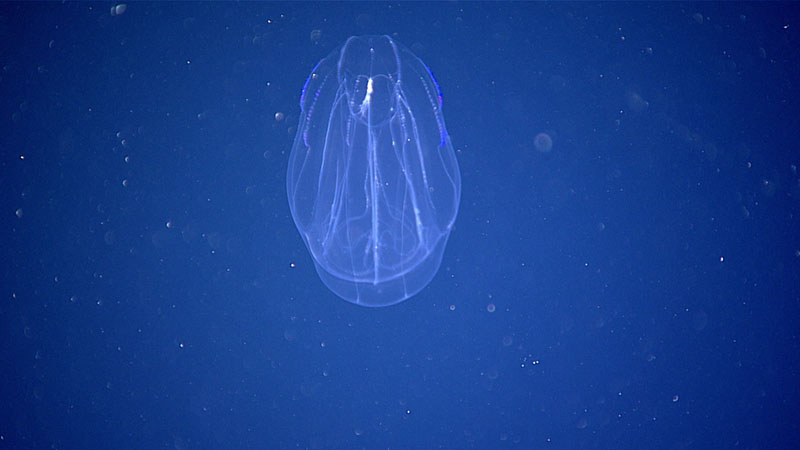

Dive 13 of Windows to the Deep 2021 was dedicated to exploring the water column. Unfortunately, the dive was cut short due to technical issues with remotely operated vehicle Deep Discoverer, but we were able to conduct exploratory transects at two depths. While exploring at a depth of 300 meters (984 feet), most of the organisms we observed were small. While light due proximity to the ocean surface made imaging animals somewhat difficult, we did encounter a diverse set of organisms, such as this lobate ctenophore or comb jelly. We also saw a variety of other animals at this depth, including siphonophores, foraminiferans, jellyfish, larval fish, copepods, and more.